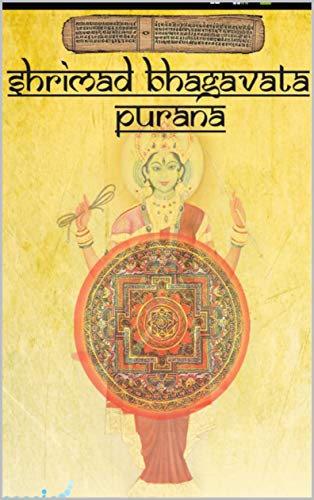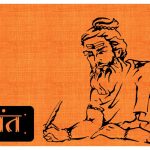Bhagavata Purana: Mesmerising Life of Lord Krishna
The Bhagavata Purana is one of the most highly regarded and multicoloured of Hindu sacred texts. Srimad Bhagavata is also known as Bhagavata Purana, one of the greatest puranas in Hinduism. Although essentially a work of the puranic genre, the Bhagavata stands out among the Puranas, or sacred histories, in several important ways.
It is the most sacred books of Hindus and is highly revered by the devotees of Lord Vishnu. It is a book about Narayana, his avatars and the detailed account of Lord Krishna. Among these are its coherent narrative structure, its high poetic quality, its philosophical sophistication, and its extensive development of bhakti theology. Bhagavata Purana consists of 12 books (skandhas) with 332 chapters (adhyayas). There are around 18,000 verses depending on the recension.

A sacred text as significant as the Bhagavata Purana calls for greater attention in the academic world. With the recent resurgence of interest in the Puranic genre of literature, and the surprisingly few academic resources available for the study of the Bhagavata, we feel that the time is right for a broadly representative study of the text (e.g. text‐critical questions) and its contexts (e.g. reception history), together with its intellectual scope in relation to both Eastern and Western spheres of discourse.
According to scholars who have studied Bhagavata Purana, the benefits that people derive out of reading this purana:
- · Attain the wisdom equivalent to studying the 18 puranas
- · Attain solace in the foot of Lord Krishna
- · Ensure overall prosperity and happiness of your family
- · Get rid of all your sins
- · Ensure longevity in the family
- · Ensure good health for your family
- · Achieve salvation
- · Ensure good luck and success in every sphere of life
- · Enjoy the boons equivalent of donating 100 cows
- · Seek freedom from jurisdiction of Maa Kali
The scriptural texts of Sanatana Dharma can be divided into three main categories – the Sruti, the Smriti and the Purana. Srimad Bhagavataam, being actually the Bhagavataa Purana, is a Maha Purana and so belongs to the category of Puranas, and it is written by Sage Veda Vyasa (Badarayana). The word ‘Bhagavataam’ primarily means the revelations of the Lord – Bhagavan Himself, (Bhagvatah Idam) or, “that, which relates to the Lord”. It also means the glory of the Lord’s devotees (Bhagavataas). It is such a valuable treasure of many a Stuti – . Some of them are Prahladha Stuti, Gajendra Stuti, Dhruva Stuti, Kunti Stuti, Bhesshma Stuti and it has Pancha (Five) Geethams similar to Sri Thiagaraja Swamigal’s pancharatna Krithis. Above all, like the crown gem the Vedas themselves have rendered a Stuti on the Supreme Lord Sri Hari.

In this aspect His Highness Muralidhara Swamigal says: What is the reason (behind the birth of) Srimad Bhagavataam? Bhagavan reserves some work for a big ‘Avatara Purusha’ (Incarnation) who comes down to earth. Until the completion of this work, the ‘Avatara Purusha’ is extremely restless; just as an ordinary man undergoes restlessness in some matter like the marriage of his daughter, so does the ‘Avatara Purusha’ undergo restlessness. Until such time they (the ‘Avatara Purushas’) complete the work for which they had come down to the earth they experience such restlessness.
Sage Vyasa was one such ‘Avatara Purusha’. He had given the Upanishads, Brahma Sutra, Mahabharata that contains the Gita etc. to the world. Yet, he experienced no peace. Why did he not find peace? He had not come down for giving these. He had not come down to the earth to give the Vedas or the Upanishads. Why then did he come down to the earth? – Only to spread the fame of Srimad Bhagavataam.
Why should he illumine the Bhagavataam? It is because only Bhagavataa dharma would be of use to people who were to come later in this Kali Yuga. (It is) A very easy dharma. A Dharma that can easily be followed by all. If Sage Vyasa had left the earth without doing this ‘Granta’ (Holy Text) people of Kali yuga would have had no ‘gati’(way out). People would know no way out.
The 10 Lakshanas
Great sages have listed the qualities of a purana as Lakshanas. They are 10 in number. Among the 18 Puranas, Bhagavataa Purana is the only Purana that has all 10 Lakshanas.
10 Lakshanas found in the purana are Sarga(creation), Visarga(Subsequent creation), Sthanam, Poshanam(grace/compassion of Lord), Uthayah(Latent impresions leading to Karma), Manvantaram(14 Manus/Rulers), Ishanukatha(Incarnations of the lord), Nirodha(returning to Godhead), Mukti(Liberation) and Ashraya(the Lord himself).
The formula is that if one can follow through the first nine Lakshanas , that will lead us to the 10th.
How many cantos?
Bhagavataam consists of 12 Cantos, 335 Chapters and 18,000 verses.
The first canto is the Adhikari Skanda, Pariskhit being the first Adhikari for listening to this great Purana and Sage Suka being the first narrator. The second canto talks about the glories of the Lord, the paths to attain Him and a brief of Srimad Bhagavataam as narrated by Brahma to Narada. The Third Canto speaks about Creation (‘Srishti’), Varaha Avatar and Kapila Avatar.
The fourth speaks about Daksha Yagna, Druva Charitra, Pritu Charitra and the story of Prachinabarhi. The fifth speaks about the avatars of Rishaba and Jadabharata, and also speaks about geography, astronomy and hellish planets The sixth canto comprises of Ajamila Chatira, Vritrasura Charitra and Chitraketu’s Charitra.
The seventh canto comprises of Prahlada Charitra. The eighth canto talks about Gajendra Moksha, Amruta Mathanam, Vamanavatara, and Matsyavatara. The ninth canto talks about the lineages of the Surya and Chandra Vamsa.
The Tenth canto talks about the birth and divine plays of Lord Krishna. This is the ‘Ashrayam’. In Padma purana, where the Bhagavataa Mahathmyam found, in the story of Atma Deva, his son Gokarna advises his father to recite the tenth canto alone, in order to attain the lotus feet of Lord Sri Hari. It is the biggest canto with 90 chapters.
The eleventh canto talks about the supreme Vedantic truths in the form of Nava Yogi Upakhyana, Avadhoota Gita and Uddhava Gita. The twelfth canto talks about the Kali Yuga and the greatness of Nama Sankirtanam – the easiest way to liberation in this Kali Yuga.
[video_ads]
[video_ads2]









